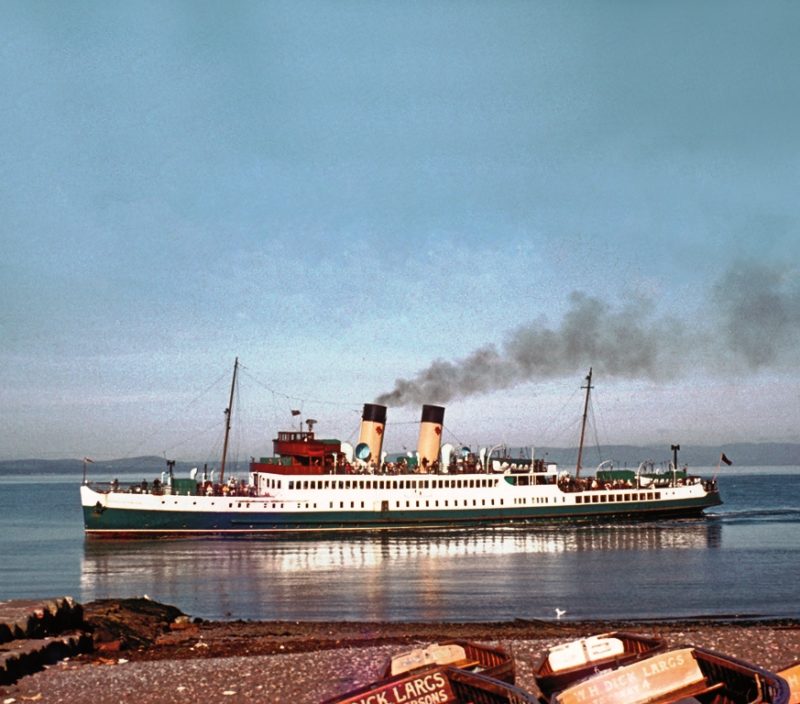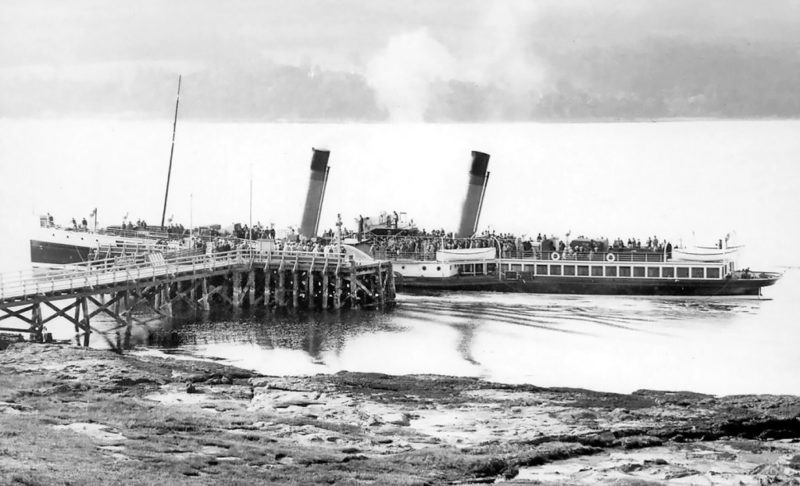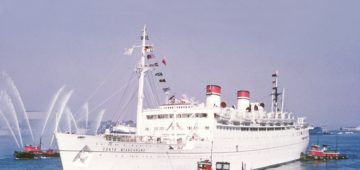
170 YEARS of SERVICE to the WESTERN ISLES, Part 2: The Caledonian Steam Packet Company
(1889-1973) and CALMAC (1973-2021)
Part 1 gave the story of the Macbrayne ‘half’ of Calmac, and Part 2 gives the story of the other ‘half’ of Calmac, of the Caledonian Steam Packet Company. The Caledonian Railway Company opened its Glasgow to Carlisle line on 15th February 1848 to link its system to London. The services of the Glasgow, Paisley & Greenock Railway had been absorbed in 1851, and those of the Wemyss Bay Railway Company in 1865.
Rival railway companies e.g. the North British Railway and the Glasgow & South Western Railway Company thwarted the further development of the company network, including the building of a new pier at Gourock. Gourock harbour was then purchased for £5,500 in 1869 and the new Gourock pier was ready for use in May 1889. The Caledonian Railway Company decided then to go into shipowning as there were no offers from outside the company to operate steamer services from Gourock. The directors of the company were Hugh Brown, James Bunten and John Cowan, and they obtained authorisation from Parliament to purchase four steamers. Two steamers, Meg Merrilees and Madge Wildfire were obtained from Peter & Alexander Campbell plus their routes from Glasgow to Kilmun and Dunoon, and two new vessels were ordered, Caledonia of 244 grt and Galatea of 331 grt, and were delivered in 1889.

The Caledonian Steam Packet Company was formed by its railway company on 8th May 1889 with an authorised capital of £64,000, however only seven shares were ever issued, one each to the seven directors, with Capt. James Williamson as secretary and manager. The yellow funnelled steamers of the Caledonian Steam Packet Co. Ltd. had ten year contracts with its parent railway company to run services on the Clyde and to Ardrishaig, and the fleet rose to six ships to take in new services to Millport on Great Cumbrae, Rothesay, Ardrossan and Wemyss Bay. The Duchess of Hamilton of 553 grt was completed in 1890 and took the first sailing to Brodick on Arran from Ardrossan on 1st June 1890.

The fleet had eight paddle steamers in 1891 in Meg Merrilees, Madge Wildfire, Caledonia, Galatea, Marchioness of Breadalbane, Marchioness of Bute, Marchioness of Hamilton and Marchioness of Lorne, plus Ivanhoe, which was managed and operated by Capt. James Williamson and had been completed for the Firth of Clyde Steam Packet Company in 1880. Hulls were black, boot topping white, with salmon pink for outside of the saloons and pale blue panellings inside, and paddle boxes were white with gold decoration. Capt. Williamson was a foremost supporter of the decision by the Caledonian Railway Company to have its own fleet, as new vessels were introduced, matched by their railway company competitors, and the start of a ruinous struggle for supremacy on the Clyde. The last decade of the 19th century led to great improvements in the quality of Clyde steamers and the provision of fast, frequent but eventually uneconomic ships.
Subscribe today to read the full article!
Simply click below to subscribe and not only read the full article instantly, but gain unparalleled access to the specialist magazine for shipping enthusiasts.





Comments
Sorry, comments are closed for this item